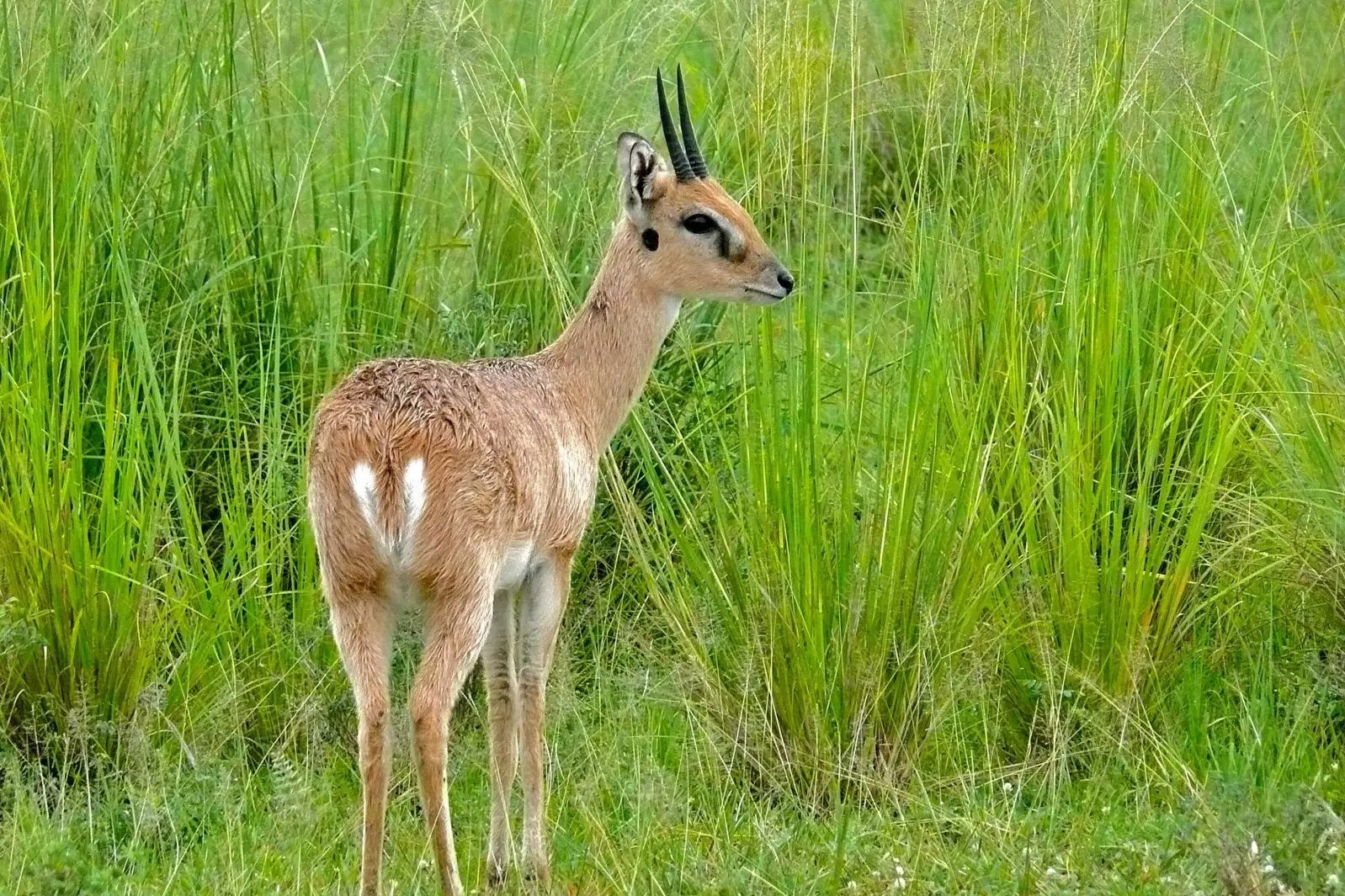Oribis in Uganda: Conservation, Habitats, and Importance
The Oribi (Ourebia ourebi) in Uganda. Uganda, popularly known as the “Pearl of Africa,” has a wide variety of wildlife, and the National Parks and reserves are homes for many species. The Oribi is among them; it probably holds a record as one of the most interesting and symbolic antelopes that are important in playing a critical role for the upkeep of the balance in the ecosystems of this country. The oribis of Uganda reflect a unique habitat, behavior, and conservation status that epitomize essential measures meant for their survival.
Physical Characteristics of an Oribi.
Oribis have distinctive physical features: the coat is reddish-brown with a white belly and face. Both males and females possess straight and slender ringed horns that reach up to 18 inches in length. Their slender physique, as well as heightened vision, suit them well in open grasslands where they are able to notice the presence of predators from a distance.
Behavior and Social Structure.
It is essentially a diurnal animal, often seen during the day. They come in small groups, mostly as a family unit or bachelor group. Social bonding remains loose, with animals associating according to familial ties or interests of mutual concern, such as feeding. These herbivores feed upon grass and herbs while, respectively, using keen senses of smell and hearing to locate possible threats.
Habitat and Distribution.
The oribi is a delicate, medium-sized antelope that pervades much of Uganda. Generally, they prefer grasslands and open woodland savannas that would fall mostly within Uganda’s national parks, including Queen Elizabeth National Park, Murchison Falls National Park, and Kidepo Valley National Park. Its adaptability to various ecosystems therefore allows its wider distribution across the country.
Conservation Status of Oribi Antelopes in Uganda.
Not classed as endangered, oribi do have quite a number of threats for which continued conservation is highly necessary: human activities related to agriculture and infrastructural development result in habitat loss, while illegal hunting and poaching of their meat and hides further exacerbate the situation with regard to oribi populations.
Conservation Efforts to Conserve the Oribi Antelopes.
Various efforts have been taken by Uganda in oribi conservation and habitat protection. National Parks protect the main preserves of antelopes, a place where they have secured residence. Anti-poaching measures have gone hand in glove with teaching the community better management of the land, which reduces risks to the oribi population.
Tourism and Education.
The occurrence of Oribis in these National Parks in Uganda generates tourism in the country. Such antelopes, occurring in their natural habitat, attract visitors from every part of the world. Tourism incomes, if well managed, can enhance the local economy and support conservation and the communities surrounding the game parks.
Remarks: Oribi (Ourebia ourebi) in Uganda.
Oribis are important in the great biodiversity of Uganda. We have to rise to the call of caretakers by addressing challenges that these great antelopes face in their struggles for survival. With continued conservation, sustainability, and awareness campaigns, Uganda is committed to the preservation of its heritage through the roaming of oribi in those beautiful landscapes.












